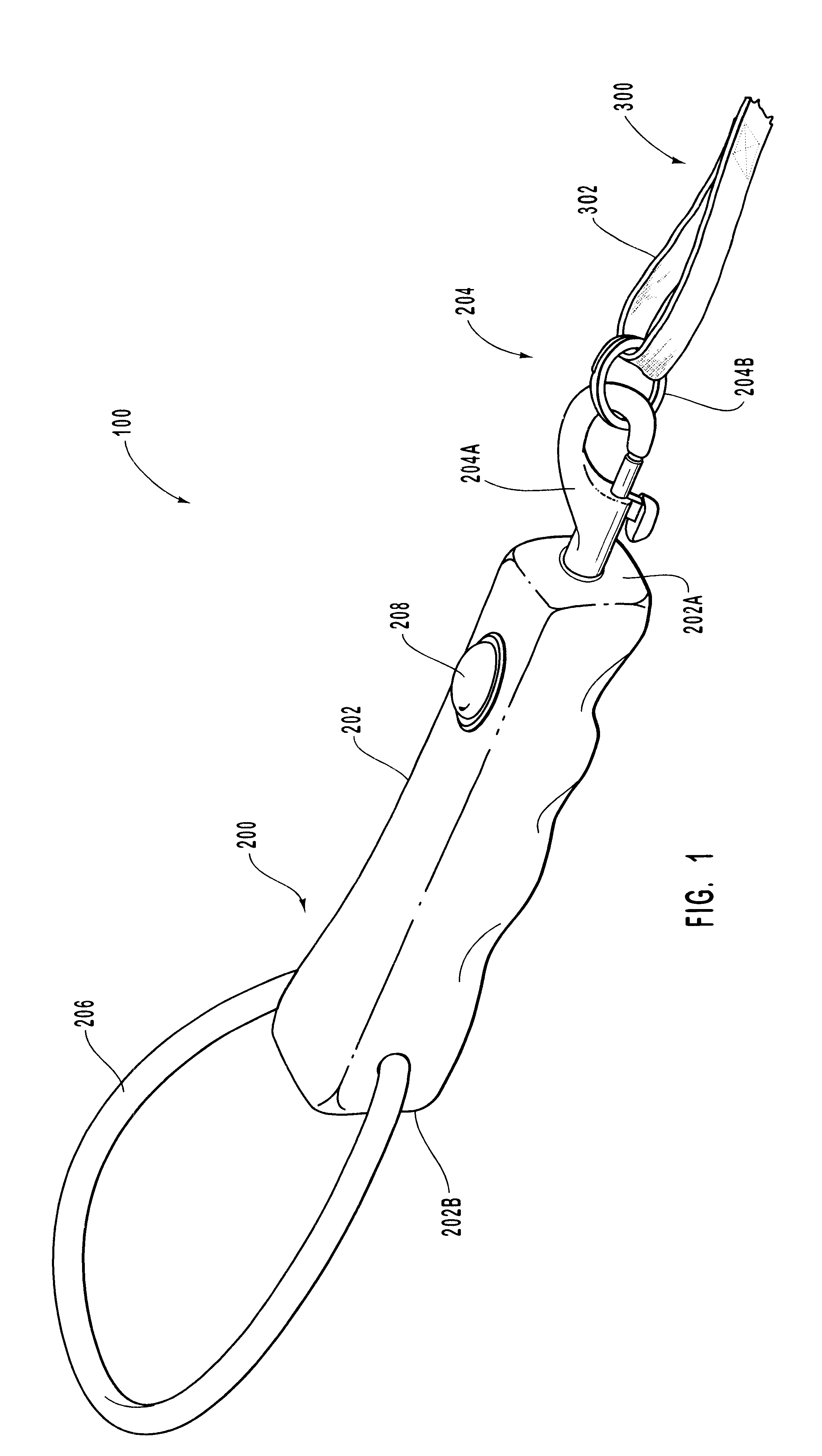Unfortunately, a walk with one's dog is not always a carefree or safe undertaking.
For example, many people walk their dogs in relatively unsafe areas of their
community.
While virtually any person runs some risk of encountering an assailant or other person with criminal intent, people who walk their dogs in such areas likely face an
increased risk of becoming a victim of a criminal act.
Unfortunately, many of these people lack a way to effectively ward off an attacker and / or summon assistance.
Such a person could readily sustain an injury, as a result of the poor
visibility that is typical at these times, or become otherwise incapacitated.
A person who is walking a dog during these times would have difficulty in attempting to summon assistance in a timely fashion however, since relatively few persons are awake or about late at night or early in the
morning.
However, those attempts represent, at best, incomplete solutions.
As indicated in the discussion below however, these devices are generally inadequate to serve the various needs of people who are out walking their dogs.
One problem with known personal security devices is that a person out walking a dog is likely to have stored the security device in his pocket, so that accessing the personal security device could be difficult or awkward in a
panic situation.
The problem is further exacerbated if the personal security device is stored in a pocket that is zipped shut or otherwise secured.
This problem of
accessibility is further aggravated by the fact that many of these personal security devices are contained in a carrying case of some kind, so that in order for the user to access and activate the device, the user is further required to remove the device from its carrying case.
Thus, in a case where a person has either been injured or is subject to
attack by an assailant, the effectiveness of the personal security device is substantially reduced because the device cannot be readily accessed and / or activated.
The problem of
accessibility of the personal security device is particularly acute in the case of a person who is walking a dog on a leash.
In particular, because one of the person's hands is occupied holding the leash, the ability of the person walking the dog to access the personal security device may be significantly impaired.
Further, if the dog is in an
excited state due to the presence of an intruder or assailant, it may take a significant effort by the person walking the dog to control the dog.
Thus occupied, it may be difficult or even impossible for the person to access and activate the personal security device.
As a result of an inability to ward off an attacker, the person walking the dog could suffer serious injury or even death.
In similar fashion, the person who has suffered injury and is unable to alert others to his situation could be forced to wait for an unacceptably long period of time before receiving proper
medical attention and / or other aid.
Another problem with known personal security devices concerns the manner in which they are held and employed by the user.
Typically, these devices are simply grasped and held in the user's hand so that, for example, a person under
attack by an assailant could easily have the personal security device knocked away during the struggle.
At best, losing the personal security device in this manner would render it ineffective with regard to the attacker.
Some known leashes are made of leather or other materials, with prominent seams and stitching that dig into the hand of the user and can cause chafing and abrasion over the course of a long walk.
This problem, in particular, is further aggravated in the case of a person who is walking a relatively large and / or untrained dog that is difficult to control.
The strain of the dog pulling against the leash causes the leash to dig into and abrade the hand of the user.
While such leashes are arguably durable, their
hardness and rigidity make them uncomfortable to use.
 Login to View More
Login to View More  Login to View More
Login to View More 


